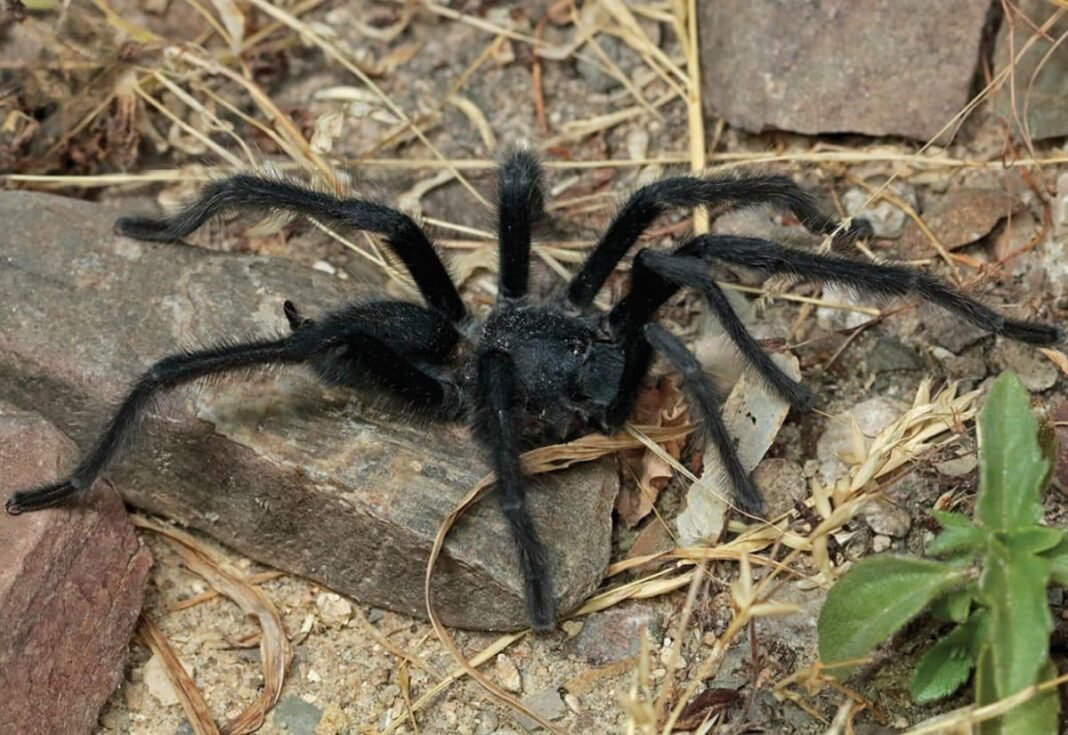
Scientists have identified four new species of tarantulas in the Arabian Peninsula and the Horn of Africa that exhibit a rare evolutionary trait: males with exceptionally long genitalia. The discovery about their reproductive appendages was significant enough to prompt the creation of a new genus, Satyrex, which was introduced in findings published in the open-access journal ZooKeys.
Dr. Alireza Zamani of the University of Turku, who led the research, said both physical and genetic analyses confirmed the spiders’ distinctiveness. “Based on both morphological and molecular data, they are so distinct from their closest relatives that we had to establish an entirely new genus to classify them,” he said.
Mythology and biology combine in naming
The genus name Satyrex merges two elements: “Satyr,” the half-man, half-goat figure from Greek mythology known for exaggerated physical features, and “rex,” the Latin word for king. The reference highlights the spiders’ most striking characteristic—male palps that are longer than any previously recorded in tarantulas.
Weird fact… Female Tarantulas, the ultimate feminists Why do female tarantulas eat males after mating? Nutritional Benefits: By consuming the male after mating, females can gain essential nutrients that may enhance their reproductive success. This can lead to healthier eggs… pic.twitter.com/F4jFZYzXfe
— Canadian eh 🇨🇦 (@xtremeleafan) August 2, 2025
Palps are specialized appendages that male spiders use to transfer sperm to females during mating. According to Zamani, this unusual size may have evolved as a defensive adaptation. “We have tentatively suggested that the long palps might allow the male to keep a safer distance during mating and help him avoid being attacked and devoured by the highly aggressive female,” he said.
A fierce new species
The most prominent member of the genus is Satyrex ferox, the largest of the newly described spiders. Males of this species have a leg span of about 14 centimeters (5.5 inches). Their palps reach nearly 5 centimeters (2 inches) in length—almost four times the length of the spider’s front body and close to the size of its longest legs.
The name ferox, meaning “fierce,” reflects the tarantula’s defensive behavior. Researchers observed that the spider responds aggressively to even minor disturbances. It raises its front legs in a threat posture and produces a loud hissing sound by rubbing specialized hairs at the base of its legs together.
Other species and a taxonomic shift
The three other new species were named for their origins and appearance: Satyrex arabicus from the Arabian Peninsula, Satyrex somalicus from Somalia, and Satyrex speciosus, known for its striking coloration.

The genus also includes Satyrex longimanus, a species first described in 1903 from Yemen. It was previously classified under the genus Monocentropus. However, researchers found its palps to be significantly longer than the typical 1.5- to 2-times carapace ratio common in that group, prompting its reclassification into Satyrex.
“At least in tarantula taxonomy, it seems that size really does matter,” Zamani said, referencing the distinctiveness of these elongated palps in defining the new genus.
Underground lifestyle
All members of the Satyrex genus are fossorial, meaning they live underground. They construct burrows at the base of shrubs or between rocks, a lifestyle that makes them difficult to observe outside targeted research. This burrowing behavior may also help explain why such striking species have remained undocumented until now.


